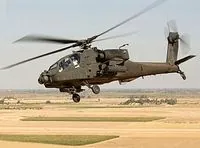US Fighter Jet Evades Russian Aircraft in Tense Alaska Encounter
A US F-16 was forced to take evasive action when a Russian Su-35 fighter jet flew dangerously close during a routine intercept near Alaska. The incident highlights growing tensions in the strategically important region.

A recent aerial encounter between US and Russian military aircraft has heightened tensions in the strategically vital Alaska region. On September 23, 2024, a US Air Force F-16 fighter jet was compelled to execute evasive maneuvers when a Russian Su-35 Flanker fighter aircraft flew perilously close during a routine intercept operation.
The incident occurred in international airspace within Alaska's Air Defense Identification Zone (ADIZ), an area extending beyond US territorial waters where foreign aircraft are requested to identify themselves. The US aircraft was monitoring a Russian TU-95 "Bear" bomber, a nuclear-capable strategic aircraft, when the Su-35 unexpectedly intervened.
General Gregory Guillot, the top commander of the North American Aerospace Defense Command (NORAD), criticized the Russian pilot's actions, stating:
"On Sept 23, 2024, NORAD aircraft flew a safe and disciplined intercept of Russian military aircraft in the Alaska ADIZ. The conduct of one Russian Su-35 was unsafe, unprofessional, and endangered all – not what you'd see in a professional air force."
This encounter marks the fifth reported incursion by Russian aircraft into the Alaska ADIZ this month alone. While such incursions are not uncommon, dangerous maneuvers like the one observed are rare. NORAD officials note that the frequency of these incidents has fluctuated since Russia resumed long-range aviation activities in 2007, ranging from zero to 15 occurrences annually.
The incident took place over the Bering Sea, a body of water separating Russia's easternmost coastline from Alaska. This area has gained increased strategic importance in recent years due to climate change opening new shipping routes and the Arctic region becoming a focus of military interest for both nations.

The US military has bolstered its presence in the region in response to joint Russian-Chinese exercises. This increased activity reflects the growing geopolitical significance of the Arctic, where both the US and Russia have competing claims and interests.
It's worth noting that Alaska, purchased by the United States from Russia in 1867, plays a crucial role in US defense strategy in the Pacific. The state's proximity to Russia – with only about 55 miles separating the two countries across the Bering Strait – makes it a key location for monitoring and intercepting foreign aircraft.
While intercepts of foreign aircraft are routine procedures for air forces worldwide, this recent incident underscores the potential risks associated with such operations. The encounter also highlights the delicate balance between asserting national interests and maintaining international stability in the increasingly contested Arctic region.
As military activities in the Arctic intensify, environmental concerns have also risen. The fragile ecosystem of the region faces potential threats from increased human presence and the risk of accidents or conflicts.
Despite historical instances of military cooperation between the US and Russia in the Bering Sea region, recent events suggest a deterioration in relations. As both nations continue to modernize their military capabilities in the Arctic, the international community watches closely, hoping for a return to more stable and predictable interactions in this strategically important part of the world.


































